Female inconstancy is such that owners of straight hair often dream of curly curls, and those who have fluffy-curly hair are often also striving for them. And indeed, alternating styling on straight hair with a hairstyle based on the creation of curls, you can safely lay claim to individuality and originality. In addition, the creation of curls allows you to "tame" the naughty fluffy hair, sticking out, as a rule, in different directions.
But when creating such a hairdresser's masterpiece, the beautiful half of humanity faces certain difficulties:
- laying requires a considerable amount of time;
- It’s quite difficult to independently create uniform curls throughout the head.
In this connection, leading a beautiful lifestyle, the beautiful half of humanity, not having enough time for styling, resort to using perm. Then the question arises: which curlers to choose?
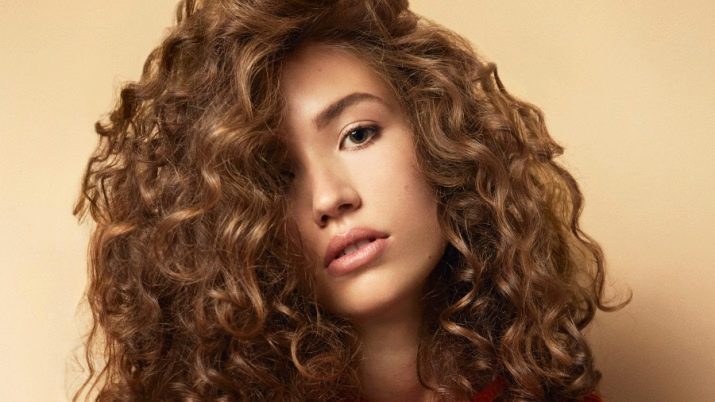
Features
The choice of curlers or so-called pertussis in a hairdressing salon for perm depends on the desired end result.
If you want to get small curls, then the curlers should be of small diameter. And, accordingly, large curls will be given by large curls, which are especially popular with ladies these days (the same small curl was in fashion in the 70-80s of the XX century).
It should also be noted that in many respects the choice of whooping cough depends on the condition and structure of the hair. For example, it is better for owners of hard hair to use curlers of a larger diameter, on which it is preferable to wind small strands of hair, otherwise the curls will turn out to be poorly curled and quickly decay.
Thin hair, in turn, “loves” small bobbins, which makes the hair elastic, and this curl lasts longer.
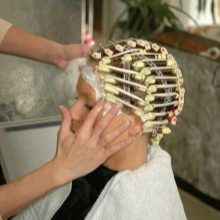

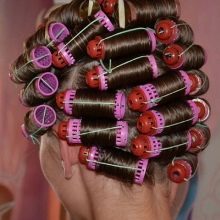
Soft fluffy hair is best wound on medium-sized curlers, which, as a rule, allows you to accurately order curls sticking out in different directions.
As for the length of the hair, one rule works here: it is preferable to use the entire length of the bobbin. That is, for short hair, choose short curlers, and for long - elements of maximum length. The fact is that curlers designed for curling short hair, taper to the middle and expand at the edges. This form allows you to avoid sticking tips in different directions. The shape of the curlers on long hair is the same, which contributes to the creation of uniform curls.
It should be noted that relatively recently appeared such a thing as the American wave, characterized by uniform and deep curls. To create such a hairstyle, bobbins of a spiral shape are used.


Types and characteristics
In fact, the variety of whooping cough is not limited only to length or diameter. Devices for curling and differ also in appearance, material of manufacture, as well as the method of fixation. As for the material, there are wooden, metal curlers (which are extremely undesirable to use for perm), rubber, plastic and foam rubber are less common.
It is worth noting that professionals prefer wooden curlers. Firstly, their hair dries faster, and secondly, when they are used, the probability of any oxidative processes that do not quite favorably affect the structure of the hair is completely eliminated.
Diameter of whooping cough varies from 6 mm to 25.
Thin curlers are suitable for short or weakened hair, and for thick and long hair use larger curlers, depending on the desired depth of the future curl.



If we talk about the shape of whooping cough, then it is represented by a fairly large number of variations: from short to long and from straight to spiral and cone-shaped.
- Classic they are small bobbins with a flat surface on which there are several rows of holes for better distribution of the chemical substance, and later, thanks to the holes, the hair dries faster.
- Classic curlers with a flat surface contrasted spiral curlers, which are usually used for vertical curling. Here are the so-called American curlers for American curling. Their peculiarity lies in sufficiently wide deep spirals, allowing you to make tight, strong curls.
- Papillots - These are foam bobbins with a flexible metal core inside. This design is good in that the bobbin quickly takes on any shape. On papillots, you can curl hair of any length.
- Japanese stickshaving a sufficiently large diameter (about 25 mm), they allow you to make volumetric curls.
The use of a particular variety of whooping cough is determined by the desired result and certain rules of use.
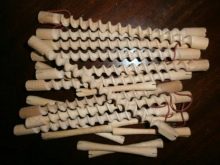


Terms of use
Experienced hairdressers before using curlers evaluate the length of the hair, its structure and condition. The article has already noted that curlers are used for short and thin hair, which will allow to wrap the entire hair to the maximum. As a rule, in such cases, the use of small diameter bobbins is appropriate. Otherwise, there is a likelihood that poorly wrapped tips will stick out in different directions. Spiral curlers, as a rule, are not used here. Since, firstly, their length is designed for long hair and medium. And secondly, whatever one may say, the ends of short hair cannot be completely wrapped, which is why in the end they will stick out in different directions.
To diversify the curls of short haircuts, you can use bobbins, narrowed to the center, which will not only give volume to the root, but also make a deep curl, the tip of which will also be twisted. Or it will be appropriate to use cone-shaped whooping cough, thanks to which you can get a deep basal curl, expanding to the end of the curl, which also gives volume to the hairstyle.

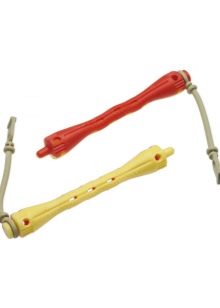

A slightly more diverse assortment of bobbins for long hair. On them, you can do either a normal wave or a vertical wave. The peculiarity is that long hair can be curled both vertically and horizontally. The difference is that curls curled horizontally often fall off with chaotic curls, and you have to style this hairstyle.
While curls wrapped vertically are already formed vertical curls that do not need to be carefully laid.
After combing the hair wound in this way, it will be quite enough to “mash” it slightly with styling gel or mousse, which quickly forms a curl.
And, finally, the last important touch of using one or another type of whooping cough is clamps or the so-called clamps for clamping hair. Clamps of classic bobbins are an elastic band with or without strap. The use of curlers with a bar is appropriate for short hair, because it presses the tip of the hair so that it does not stick out in the future.



It is better to curl long or medium-length hair on curlers without a bar, because with an inept approach, a hair crease most often appears, which spoils the look of the finished hairstyle. Nowadays, bobbin clamps are widely used as an alternative to curlers on an elastic band (they also acquire clamps if the elastic bands deteriorate when stretched, and the bobbin itself is still quite suitable for use).
The marked fixture is made of durable and flexible silicone, which allows you to firmly fix the hair. In order for the clamps to last as long as possible, their choice must be compared with the length of the whooping cough. The manufacturer on the package noted for the whooping cough lengths of the clamps.

Safety precautions
The main safety rule states: do not use metal curlers for perm. In addition, there are several more rules, the observance of which will help to avoid profuse hair loss, and also preserve the pristine look of the curl for as long as possible.
- Before starting work, it is mandatory to conduct a test test for the reaction of the body. If after applying a chemical preparation a pronounced redness appears on the skin, then the procedure will most likely have to be stopped.
- If the solution is kept too long, this will cause brittle hair. It can also become brittle due to excessively tight twisting on curlers (and if you twist slightly, the curl will turn out to be uneven along the entire length).
- You should not plan staining 3 weeks before curling and 3 weeks after it, as this can cause hair loss.
- After curling, it is not recommended to wash your hair for 3 days, which will allow the substance to gain a foothold on the structure of the hairline.
- And the last thing that many probably know, but still I want to remind you: the use of expired substances is strictly prohibited.



The technique of curling hair with bobbin when permed is shown in the video below.










